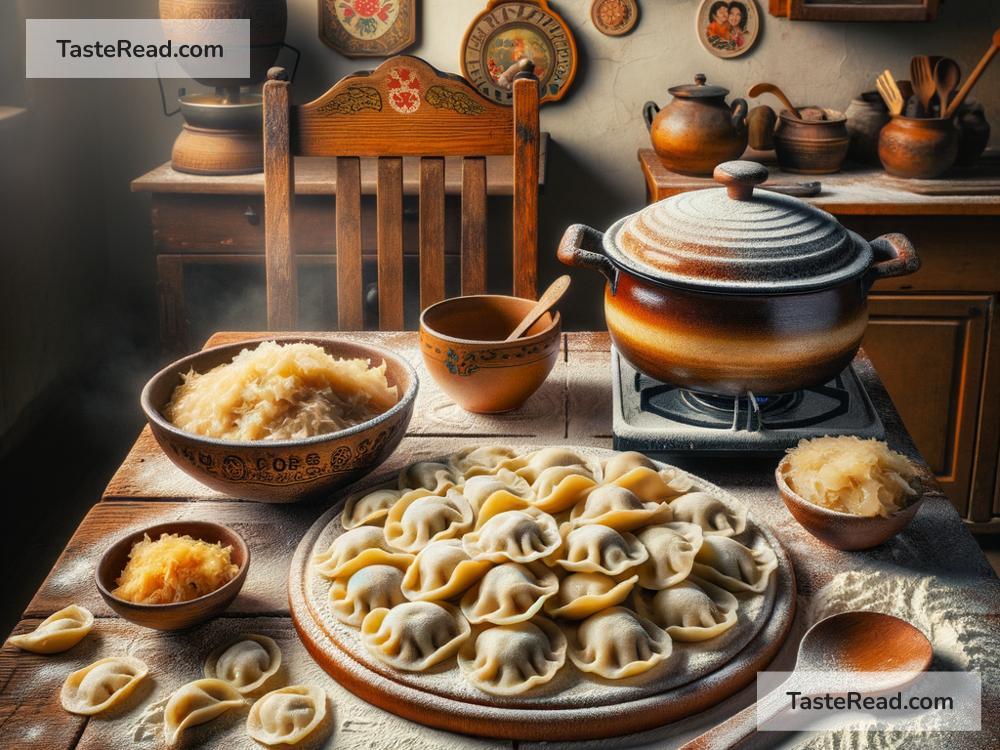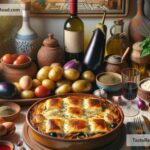Journeying Through Traditional Czech Knedlíky and Sauerkraut
Introduction
The Czech Republic might be small in size, but when it comes to food, it boasts big flavors rooted in history and culture. Czech cuisine is hearty and comforting, perfect for cold days or warming the soul after a long day. Two staples of this cuisine are knedlíky (dumplings) and sauerkraut. These dishes have been enjoyed for generations and remain central to Czech culinary tradition today. Let’s embark on a journey to explore the charm, history, and deliciousness of these iconic foods—prepared simply but packed with flavor.
What Are Knedlíky?
Knedlíky, Czech dumplings, are one of the most famous elements of Czech cuisine. They come in two main types: bread dumplings (houskové knedlíky) and potato dumplings (bramborové knedlíky). Though their preparation techniques differ slightly, they both share one purpose: to soak up the rich sauces and juices of traditional Czech dishes, like roast pork or beef goulash.
Bread dumplings are soft, pillowy slices made from flour, eggs, milk, and cubed bread pieces. These dumplings are boiled and then sliced into neat rounds. Potato dumplings, on the other hand, are denser and made from mashed or grated potatoes mixed with flour. Their chewy texture makes them the perfect partner for saucy meals.
While dumplings may seem basic, they serve as the perfect canvas for flavorful Czech stews and roasts. They’re not just a side dish; they’re an essential part of the meal that ties everything together.
A Peek into Sauerkraut
Sauerkraut, or zelí in Czech, is fermented cabbage that has a tangy, slightly sour taste. It might sound simple, but it’s a classic ingredient in Czech kitchens. The process of fermenting cabbage goes back centuries, long before refrigeration existed. Fermentation helped preserve food for longer periods, especially through the harsh winters.
Czech sauerkraut is often cooked with onions, caraway seeds, and a bit of sugar to balance the sourness, creating a hearty yet bright flavor. It’s served warm and usually paired with dumplings and pork. The combination of sharp sauerkraut, tender dumplings, and savory meat makes for a truly satisfying meal.
The Perfect Pairing: Knedlíky and Sauerkraut
Czech cuisine is all about combining flavors to create meals that are filling and delicious. Knedlíky and sauerkraut are a match made in culinary heaven. The mild, neutral taste of the dumplings balances out the strong, tangy flavors of sauerkraut, creating harmony on the plate.
One of the most iconic Czech dishes that features this pair is vepřo knedlo zelo, which translates to “pork, dumplings, and sauerkraut.” In this dish, roasted pork is seasoned beautifully, accompanied by slices of soft dumplings and a generous serving of sauerkraut. Each bite offers a mix of savory, tangy, and hearty flavors—a true taste of Czech tradition.
A Step Back in Time
Both knedlíky and sauerkraut have fascinating histories that connect us with the Czech Republic’s roots. Dumplings have existed in European cuisine for centuries, representing the simplicity of meals made with accessible ingredients like flour and bread. They evolved from basic sustenance into a cultural icon.
Sauerkraut, too, has historical relevance. Its fermentation process was essential for keeping food edible during colder months. Beyond that, it is also a source of vital nutrients, like Vitamin C, which made it essential for people living in the past who had limited access to fresh produce in winter.
Today, these dishes remain popular not only for their flavors but also for the historical connection they offer. Eating knedlíky and sauerkraut is more than enjoying a meal—it’s taking a step back into Czech history.
Homemade Comfort
One of the best things about knedlíky and sauerkraut is that they’re simple to prepare at home. Making bread dumplings may require a few steps, but the process is straightforward—mix the dough, shape it, boil it, and then slice it. Sauerkraut can be bought pre-fermented at the store, or adventurous cooks can try fermenting it themselves at home. Cooking sauerkraut with onions and caraway seeds doesn’t take long, and the aroma will fill the kitchen with delicious anticipation.
Homemade knedlíky and sauerkraut can turn any dinner into a comforting Czech-inspired meal. They’re ideal for family gatherings, reminding everyone of timeless dishes crafted with love.
Conclusion
Exploring Czech food is like traveling through the country’s rich history and warm traditions. Knedlíky and sauerkraut are not just side dishes—they’re staples that reflect the Czech way of life. Their simplicity and taste have charmed locals and visitors alike for centuries.
If you ever find yourself in the Czech Republic, don’t miss the opportunity to try these dishes fresh from a Czech kitchen. If you’re at home, try cooking them yourself and discover why they’ve stood the test of time. Knedlíky and sauerkraut are more than just food; they’re an invitation to experience the heart and soul of Czech culture, one bite at a time.


